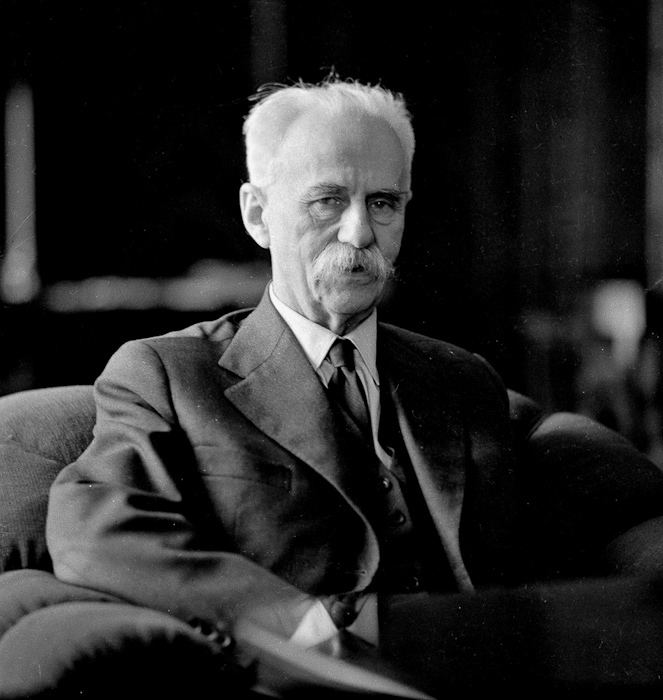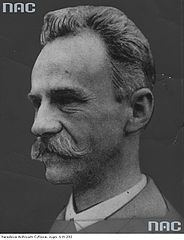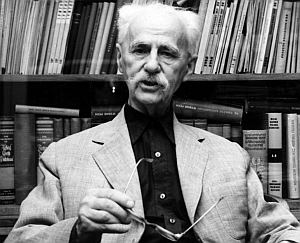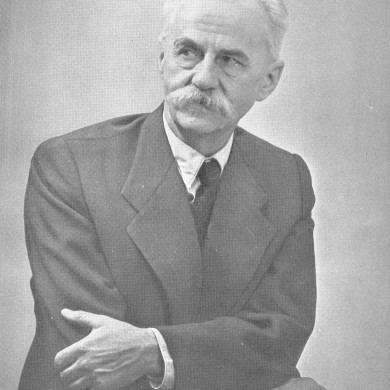Name Tadeusz Kotarbinski | Role Philosopher | |
 | ||
Books Praxiology: An Introduction to the Sciences of Efficient Action, Gnosiology | ||
Prof tadeusz kotarbi ski ku wewn trznej pogodzie ca o
Tadeusz Kotarbiński (['kotarbiński]; 31 March 1886 – 3 October 1981), was a Polish philosopher, logician and ethicist.
Contents
- Prof tadeusz kotarbi ski ku wewn trznej pogodzie ca o
- Tadeusz kotarbi ski propagator dobrej roboty cz owiek pe ny
- Life
- Reism
- Ontological reism
- Semantic reism
- Works
- References
A pupil of Kazimierz Twardowski, he was one of the most representative figures of the Lwów–Warsaw School, and a member of the Polish Academy of Learning (PAU) as well as the Polish Academy of Sciences (PAN). He developed philosophical theory called reism (Polish: reizm) and an ethical system called independent ethics. Kotarbiński also contributed significantly to the development of praxeology.

Henryk Greniewski and Kazimierz Pasenkiewicz have been doctoral students of Kotarbiński.
Tadeusz kotarbi ski propagator dobrej roboty cz owiek pe ny
Life

Tadeusz Kotarbiński was born on 31 March 1886 in Warsaw, then Congress Poland, Russian Empire, into an artist's family. His father, Miłosz Kotarbiński, was a painter and a composer; his mother, Ewa de domo Koskowska, a pianist. His uncles were - Józef Kotarbiński, an important figure in Polish theater circles and Wilhelm Kotarbiński - a talented painter. Expelled from secondary school in 1905 for participating in a strike, Kotarbiński managed to graduate two years later. He studied first as an unenrolled student at Jagiellonian University in Kraków, attending mostly lectures on mathematics and physics; then architecture in Lvov and Darmstadt, to finally settle for studies in philosophy and classical philology at the Lvov University. His professors were some of the most esteemed philosophers, logicians and mathematicians of his time: Kazimierz Twardowski, Jan Łukasiewicz, Władysław Witwicki and philologist Stanisław Witkowski. He received his PhD degree with the thesis "Utilitarianism in the ethics of Mill and Spencer" in 1912.

After graduation he first worked as a secondary school classical languages teacher at the Rey Gymnasium in Warsaw. In 1918 Kotarbiński started lecturing career in philosophy at the Warsaw University. In years 1929/1930 he held the position of Dean of Humanities Faculty.
Reism

Reism is a pansomatism (from Greek:πᾶν meaning "all" and σῶμα - "body") ontology as well as semantic theory developed by Kotarbiński and most extensively exposed in his major work: Elements of the Theory of Knowledge, Formal Logic and Methodology of the Sciences, first published in 1929. Kotarbiński was the creator of the term reism - a word derived from the Latin "res" meaning "thing".
Ontological reism
Kotarbiński's ontological reism approach assumes that the only things that exist, and thus the only ontological category to be used, are individual, concrete objects (or bodies) in opposition to doctrines allowing for the existence of such categories as universals, states of affairs, properties, relations, sets, classes, mental constructs etc.
Semantic reism
In its sematic formulation Kotarbiński postulated that meaningful sentences have to contain so-called genuine names (referring to concrete objects) as opposed to abstract objects' names or non-genuine names (onomatoids). He also distinguished onomatoids from empty names, which he considered to be reistic. Sentences with onomatoids only were in his view meaningless, whereas those with empty names meaningful.
Reism has been anticipated by philosophers preceding Kotarbiński (Leibnitz, Brentano and his pupils and earlier nominalists and materialists), but it was Kotarbiński who developed it to the complete, systematic exposition and gave it its name.
In 1958 in "Philosophical Studies" n4 (7) Kotarbiński published Developmental Stages of Concretism, an essay in which he discussed the construction and evolution of his theory starting from the early concretism or nominalism, passing through seven stages of re-elaboration and finally culminating in pansomatism. Kotarbiński used terms: reism, pansomatism and concretism as equivalents to some extent throughout his works.
